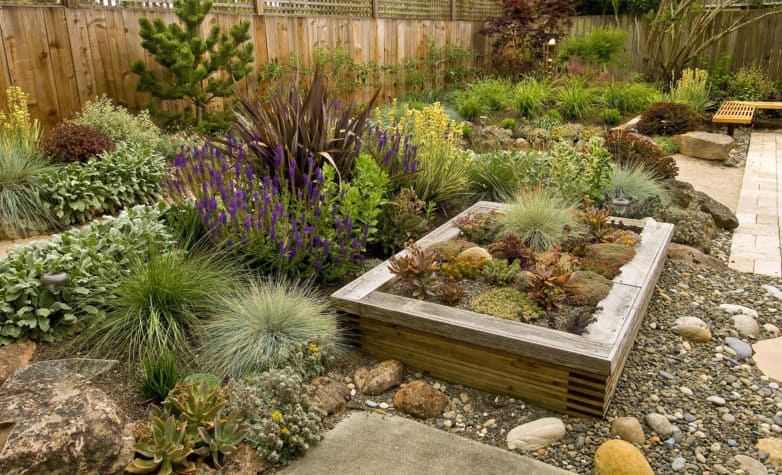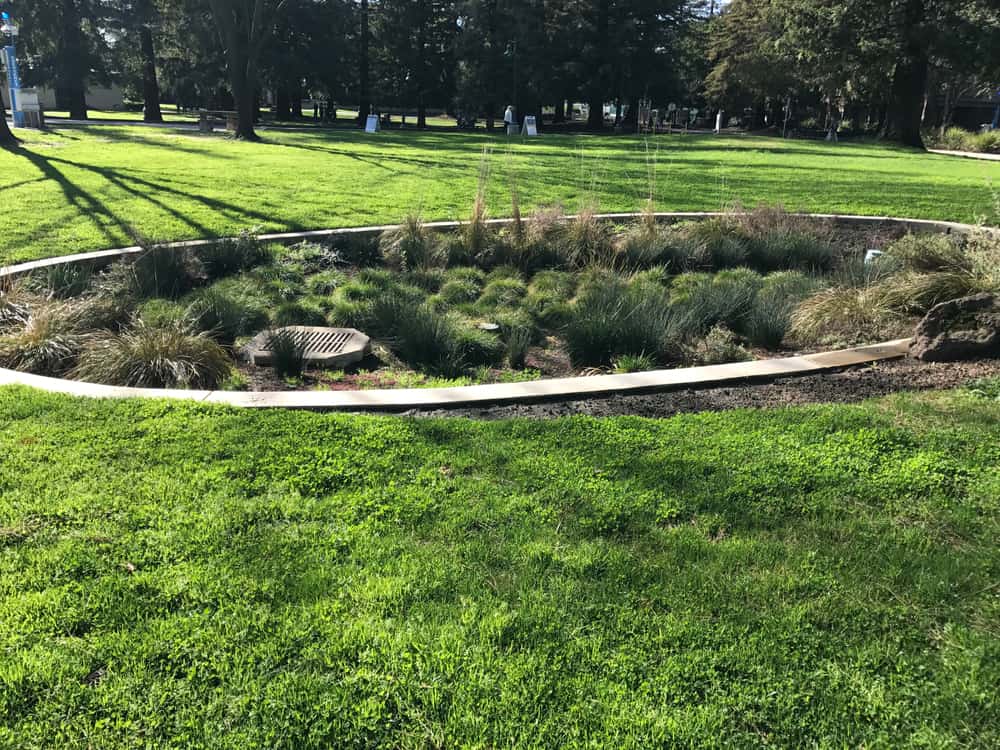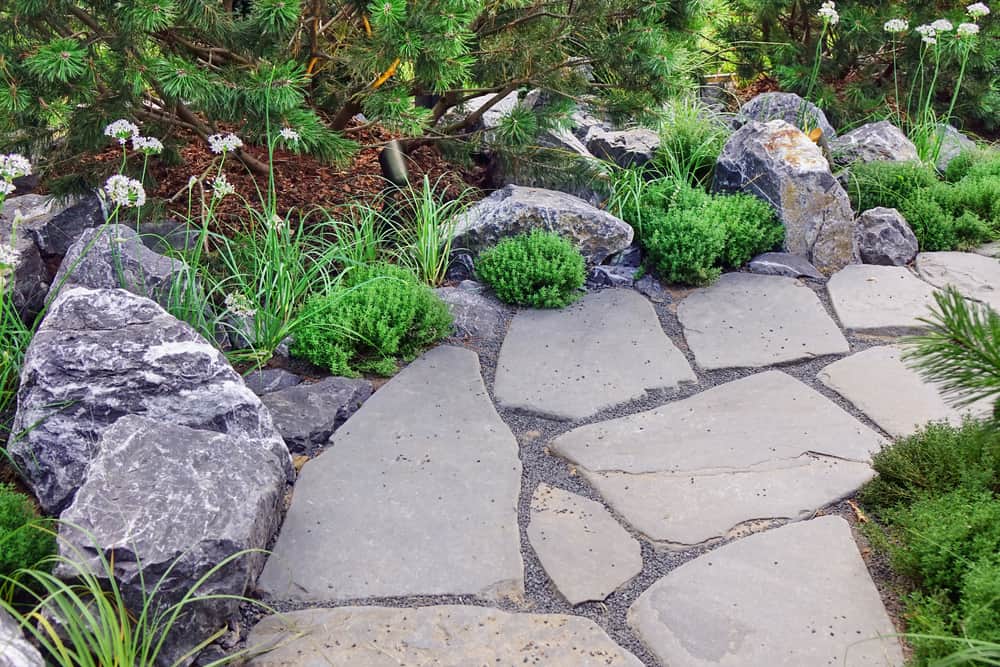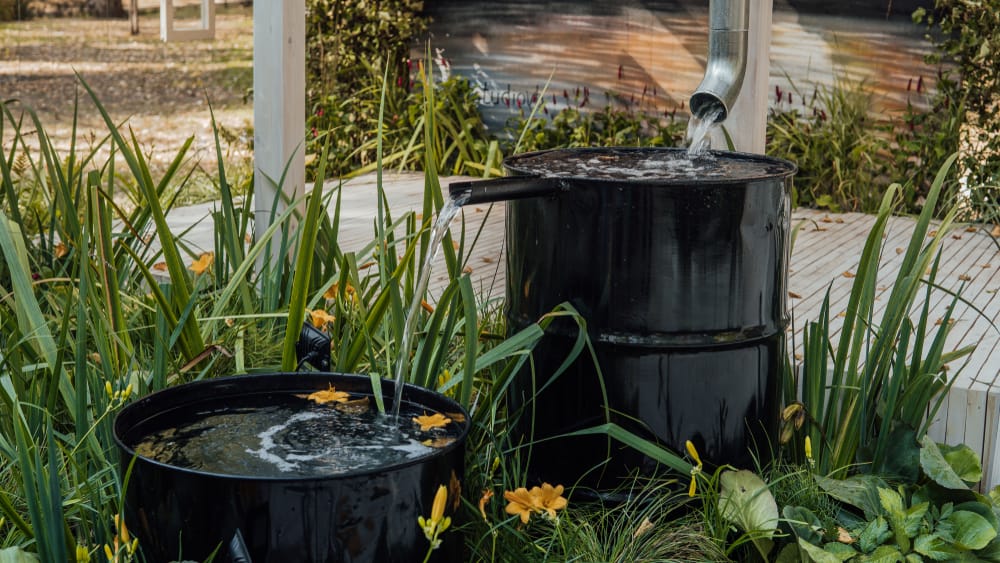While the specifics of rainscaping ideas will vary depending on your location and outdoor space, the basic premise remains the same.
So before going over some rainscaping ideas, let’s look at what it is and where you can rainscape.
What is Rainscaping?
Simply put, rainscaping involves designing an outdoor area to make the best use of rainwater. The most basic definition involves a ditch for collecting water, supported by plants to soak it up.
Rainscaping is used commercially by local councils to reduce the chances of flooding but also to deal with pollution before it ends up in the water cycle. However, you can set up a rainscape in your outdoor space, just on a smaller scale.
Benefits of Rainscaping
The main benefit of rainscaping is to control the amount of water circulating around an outdoor area. In turn, this allows you to reduce water-related building damage and flooding through the use of permeable or water-absorbing materials.
Also, rainscaping reduces the level of pollutants entering the water system. By slowing down water flow, it gives the sun, air, and plants time to break down or absorb pollutants.
What You’ll Need
Most rainscaping ideas involve a few basic items. These are:
- Water butts or other collection systems
- Guttering or other water direction systems
- Plants that don’t mind having wet feet
Some suitable plants for rainscaping include:
- Hydrangea
- Swamp oak
- Willow
- Dogwood
- Ferns
- Sedge grass
- Switchgrass
- Coneflower
Basically, look for plants that grow along waterways or in marshes because, unsurprisingly, these are perfectly suited to rainscaping setups.
Where Can You Rainscape?
Generally, the best place to rainscape is in a backyard because it helps to have a large, permeable surface, such as a lawn. However, it ultimately depends on your goals when rainscaping, along with the size of your planned setup.
If you have a patio or deck, for example, it shouldn’t be too difficult to rainscape. You could replace paths with flagstones, which allow water to soak through. Similarly, your deck probably has some kind of drainage setup, but you won’t want too much water hanging around on wood decks.
Balconies present unique challenges, but aren’t beyond rainscaping ideas. You must consider the weight tolerance of your balcony if you plan to collect water, as it’s surprisingly heavy.
Also, think about neighbors and whether they want streams of water coming over the edge of your balcony. Below, we’ll suggest a simple rainscaping plan that could work on a balcony.
5 Rainscaping Ideas
These rainscaping ideas aren’t specific how-tos. As such, we won’t list all the materials you’ll need or how to build them. Instead, they should serve as inspiration for what works best in certain outdoor spaces depending on how much rain you have or what you can do about collecting it.
So, here are 5 rainscaping ideas.
1. Full-on Backyard Rainscaping

A full-scale backyard rainscape features all the important water-controlling setups. Digging a creek or ditch at your backyard’s low point allows water to collect somewhere naturally. Adding a plant buffer of marshy or waterside plants then gives it somewhere to go.
Combine this with small dams around your home (particularly around the basement) and add other features to direct the water flow, such as weirs.
Pros
- The most effective way of controlling rainwater.
- Plenty of options available.
Cons
- Expensive.
2. Rain Garden

A rain garden is as simple as it sounds. In terms of rainscaping ideas, it’s one of the easiest to set up if you’ve got the space.
It’s a depressed area, ideally at your yard’s lowest point, filled with marshy or water-loving plants. The water flows there naturally and is absorbed by the plants gradually over a day or 2.
Pros
- Easy to set up yourself.
- Gives you room for interesting plants.
Cons
- Can disrupt your garden’s appearance depending on where the low point is.
3. Permeable Patio

Again, this is one of the simpler rainscaping ideas. If you’ve got a patio or paved walkway, consider replacing the existing material with something permeable. Rather than focusing on a specific material, it’s more about how the patio is built.
Permeable pavers are smaller stones with more gaps in between. This allows water to soak through rather than collect on top and run elsewhere. For better results, you could add a layer of gravel and even some pipes underneath to control runoff.
Pros
- Easy way of retaining a patio or walkway.
- Doesn’t involve extra plants or water redirection.
Cons
- Expensive.
4. Rain Barrels

Rain barrels are low-cost and suitable for decks or balconies. They’re not rainscaping in the sense you might expect but still count because they capture and store rainwater. In turn, you can then use this for watering outdoor plants.
Alternatively, you could direct a barrel’s water flow directly into a flowerbed. You might not want to do this on a balcony, though, as you have no way of controlling the excess water.
Pros
- Inexpensive.
- Gives you a ready supply of water for your plants.
Cons
- A very temporary way of controlling rainwater.
5. Balcony Rainscaping
There’s not loads you can do for rainscaping a balcony. Eventually, the rainwater will need to go somewhere, as it’s unlikely you’ll have enough space to collect it all.
A couple of water barrels is a good start. You could also try building some kind of creek-based Zen Garden that involves redirecting rainwater into a trough or channel to sustain marshy plants. However, make sure the water is constantly flowing otherwise you’ll end up with more problems than you solve.
Pros
- Helps control rainwater on properties above ground level.
- Allows you to water plants or grow different types.
Cons
- Very limited in what you can do to control or store rainwater.
Final Thoughts on Rainscaping Ideas
Hopefully, these rainscaping ideas have given you some inspiration about the possibilities of this kind of project. Once you understand the basics – storing water and controlling its absorption – it’s easy to get super creative with how you do this. With the right budget, you could set up some amazing rainscapes in your outdoor space.
